Nineteen forty one would prove to be a fateful year for many across Ireland. The second World War was in its second year. Even though Britain had not succumbed to a Nazi invasion, there seemed no end in sight and no clear path to victory. The British were struggling to safeguard their convoys in the Atlantic, their armies faced growing challenges in North Africa and although the RAF had won the Battle of Britain, they were powerless to prevent the bombing of British cities.
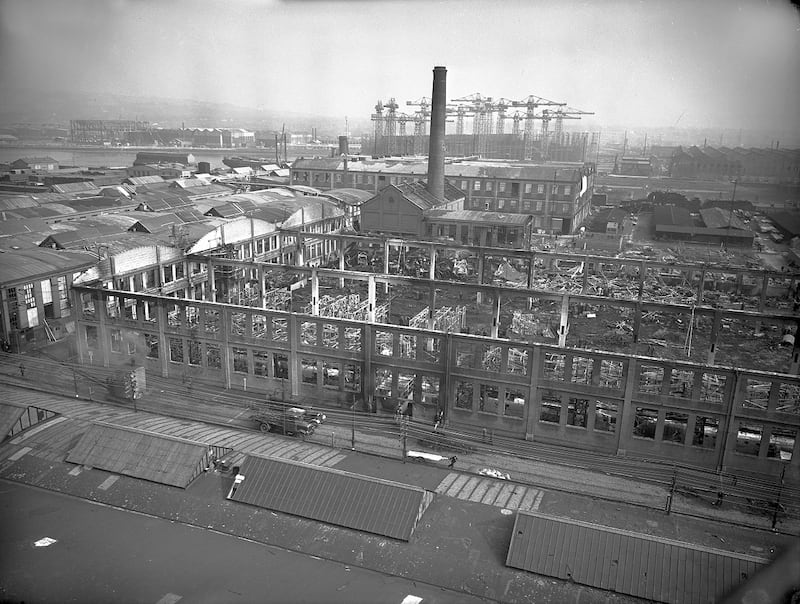
The neutral Irish state and Northern Ireland regarded one another warily throughout the opening years of the conflict. The Dublin and Belfast governments suspected one another of everything from subversion to plotting invasion, and the long-standing cold war between the two jurisdictions showed little sign of thawing. In July 1940, the taoiseach, Éamon de Valera, rejected a so-called offer of unity from Churchill’s cabinet, essentially entailing Irish entry into the war on the Allied side in return for the vague promise that Britain would engineer some form of post-war unification. An elderly, ailing and "profoundly shocked" Northern Irish prime minister, Lord Craigavon, promptly assured London that “to such treachery to loyal Ulster, I shall never be a party”.
Craigavon died after a short illness in November, 1940. Having spent 19 years in office, he passed away satisfied in the knowledge that he had overseen the safe maintenance of the six counties within the United Kingdom. Sadly, he had done nothing to ensure public safety in the greater Belfast area from the dangers of aerial attack. As early as 1939, British defence experts countered a popular belief that Belfast lay far beyond the range of the Luftwaffe. They assured Stormont leaders that a force of enemy bombers could reach the city in less than three hours. Ominously, a German reconnaissance aircraft was spotted surveying the city within weeks of Craigavon’s death.
A tiny force of six Heinkel He 111 bombers from Kampfgruppe 26 raided the docks at low level
In mid-March 1941, the Luftwaffe raided the Clydebank, and parts of central Glasgow. Stormont ministers under Craigavon’s frail successor, John Andrews, awoke to the impending danger as the minister for public security, John MacDermott, assured the cabinet that Belfast would be next. MacDermott accurately forecast the bombing to occur during the two moon periods in April, the 7th and 16th, and pointed out that Belfast was poorly protected, with little by way of anti-aircraft defence.
Belfast was more densely populated in parts than any other city the UK at that time, but had the lowest proportion of public air-raid shelters, only 200 which were mostly in the harbour area. It was estimated that 4,000 households had constructed Anderson shelters, but this was contingent on affluence. Belfast’s working-class districts were largely unprotected and exposed.
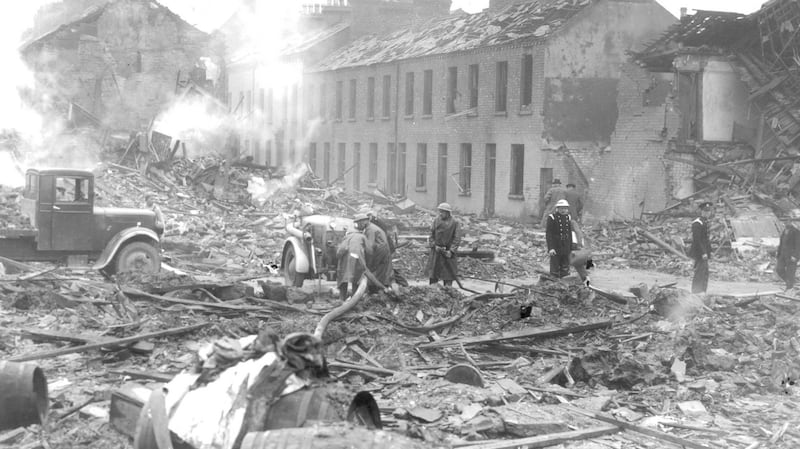
On the night of April 7th, 1941, MacDermott’s warning came to pass. A tiny force of six Heinkel He 111 bombers from Kampfgruppe 26 raided the docks at low level with incendiaries, high-explosive bombs and parachute mines. Although residential areas were also hit, casualties were small by British Blitz standards; just 13 people had perished. This, according to the late Robert Fisk, had been a "pin-prick, exploratory raid". On returning to France, the Luftwaffe crews reported to their commanders that Belfast’s air defences were "inferior in quality, scanty and insufficient".
A frantic MacDermott scrambled to bolster the city’s defences for the next attack. The ARP (Air Raid Precaution) services were fully mobilised, searchlights arrived from Britain on April 10th and barrage balloons were positioned. However, Belfast possessed a mere 22 anti-aircraft guns, of which only 16 were Heavy AA. There was no smokescreen and no night fighter air cover, save for a squadron of Hurricane fighters at nearby RAF Aldergrove.
Meanwhile, in Dublin, de Valera and his government, seemingly unperturbed by events in the north, busied themselves with preparations for the Silver Jubilee commemorations of the 1916 Rising. On Easter Sunday, April 13th, Irish soldiers and military hardware paraded down O’Connell Street past the GPO. De Valera and his ministers took the salute as members of the Defence Forces, the Old IRA and the emergency services marched past. The overtly militaristic character of the parade shocked many; de Valera had originally indicated that a large ceremony would be inappropriate due to the conditions of neutrality, and yet these commemorations still rank among the largest ever held. The opportunity to project Irish military strength, and for this display to be captured by British Pathé newsreel cameras, clearly proved irresistible at a time when the Irish State faced the prospect of attack or invasion from either side.
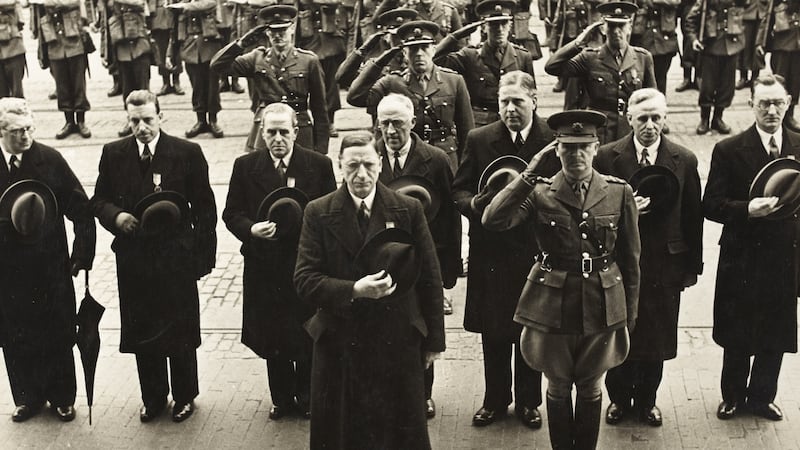
The commemorations in Dublin were, predictably, viewed in a condemnatory light by Stormont, who perceived the parade as an act of incitement to members of the IRA in the north. However, Andrews’ government had little time to dwell on how much comfort de Valera was giving to their enemies. William Joyce, the Anglo-Irish Nazi broadcaster known as Lord Haw Haw, had recently threatened: “There will be Easter eggs for Belfast”.
On Easter Tuesday, April 15th, spectators at a football match at Windsor Park watched a lone Junkers Ju 88 aircraft circling the city. At around 8pm, the first wave of an assorted force of 150 Luftwaffe bombers took off from airfields in northern France, bound for Ireland. The drone of their diesel engines could be heard along the Irish east coast. Historian Brian Barton argues that the lights of Dublin served as a waypoint for German navigators, and such appears to be confirmed by Irish cabinet documents.
By 10:30 pm, the sound of the approaching wave echoed off the Belfast hills. Fighters from RAF Aldergrove were ordered to scramble. At 10:40 am, the air raid sirens were sounded. Those who could made their way to an air raid shelter, but reports suggest that many civilians were unable to take cover in time.
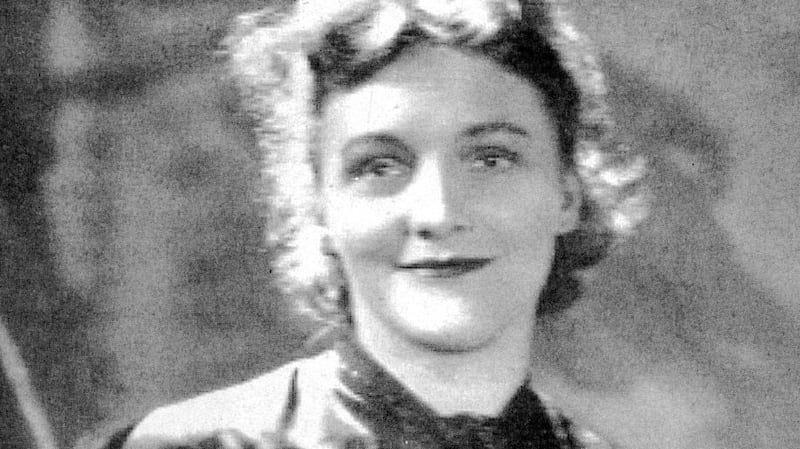
The famous Connemara folk singer, Delia Murphy, wife of Irish diplomat Dr Thomas J Kiernan, was performing in the Ulster Hall when the air raid warning sounded outside. The venue was "packed to the rafters" with an above-capacity audience and a fire warden informed the unnerved crowd that German bombers were off the coast of Down and that nobody was to leave until the raid was over. Soldiers then blocked the doors to prevent the gradually panicking crowd from rushing to the exit. As the bombs began to fall outside, people began to scream in terror, but Murphy quickly intervened to calm the crowd. She engaged them in a series of hearty sing-alongs, while the bar apparently plied the crowd with alcohol. In a remarkable episode of Blitz Spirit, the crowd sang, danced and drank merrily into the small hours as the bombs whistled and crashed outside, according to Scott Edgar, who runs the Wartime NI blog.
At 5am, the sirens sounded the All Clear and the crowd was permitted to leave. When the doors of the Ulster Hall sprang open, however, the people emerged into a hellish nightmare. The city was ablaze, and everywhere buildings were crumbling and falling into the streets.
The first attack struck at the city’s waterworks, damaging the water supply. Then wave after wave of Luftwaffe bombers dropped high explosives, followed by incendiaries and land-mines. When the incendiaries were dropped, firefighters could only watch helplessly as the city burned around them; the water pressure being too low for effective firefighting.
Estimates still vary, but there is broad consensus that between 900 and 1,100 civilians, emergency service and military personnel were killed and some 1,500 were injured
The effects of the raid are frightening to consider. The German crews that flew with the last wave of bombers were shocked at the "sea of flames" their comrades had initiated, which "spread over the entire harbour and industrial area". The Luftwaffe were unaware that they had directed their attacks primarily on residential areas; it had been their original intention to target the docks, shipyards and industrial areas of the city.
Eyewitnesses to the raid include William McConnell, a Private in the 1st Royal Ulster Rifles. He remembered walking from his barracks along the Antrim Road to his mother’s home near Glengormley when the trees which lined the road were levelled all around him as bombs exploded nearby. In the city, the scene that greeted him was one of chaos. He discovered that a local air-raid shelter had taken a direct hit and saw the gruesome aftermath: “There were a lot of bodies lying around… in places we thought were ‘safety’… there were 200 in one place where it was supposed to be ‘safety’… that got a direct hit, and they were all killed, and there went flying bodies all over the place.”
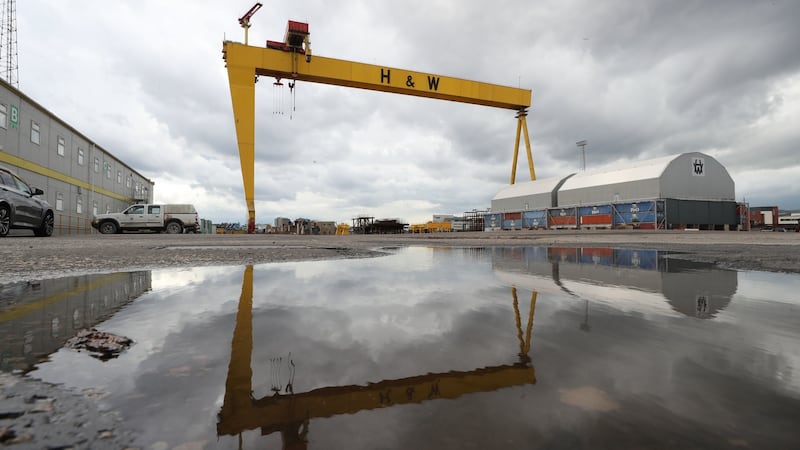
Four members of a family from Thorndyke Street were killed when this air-raid shelter was blasted open by a German bomb. These were cousins of a 16-year-old George Thompson, from Comber, Co Down. Thompson, who fought with the Royal Naval Commandos during the Normandy invasion in June 1944, recalled that one member of the family, a shipyard worker at Harland and Wolff, survived the raid because he returned home to change his clothes.
The firestorm that was conceived from the 140 fires burning throughout Belfast was so overwhelming that MacDermott, who watched the inferno engulf the city from his home near Stormont, rang Sir Basil Brooke to ask permission to request fire brigades from Dublin. Brooke authorised this as "a question of expediency". This resulted in the most remarkable episode of north-south co-operation in Irish history. Fisk, writing in the 1980s, remarked that MacDermott did "something that no Northern Ireland government minister had done for his province before, or would ever do again: he called Dublin and asked for help".
Neutral Éire’s response was immediate. Within two hours of MacDermott’s request, de Valera had personally authorised 71 firemen and 13 fire tenders, from Dublin, Dún Laoghaire, Dundalk and Drogheda, to cross the Irish Border and assist their Belfast colleagues. These men had been prepped by de Valera in advance and in each station when volunteers were requested all had stepped forward. They set off at 6am and would remain in Belfast for three days.
The horror of the bombing became apparent in the days that followed. Neighbourhoods and whole streets had disappeared. Burke Street, between Annadale and Dawson streets in the New Lodge area, had been wiped off the map with all 20 houses obliterated; not one resident survived. Firemen, wardens and volunteers often pulled battered and disfigured bodies of men, women and children from piles of collapsed masonry. Buried survivors screamed in terror and agony for days until rescued. When the dead were counted, the enormity of the tragedy became clear.
Estimates still vary, but there is broad consensus that between 900 and 1,100 civilians, emergency service and military personnel were killed and some 1,500 were injured on the night of April 15th and the early hours of the following morning. Even taking the lowest estimate of 800 deaths, one arrives at the largest figure of casualties to occur from a single incident in modern Irish history. Not since the 1640s, three hundred years earlier, had so many people died in Ireland as a consequence of one event.
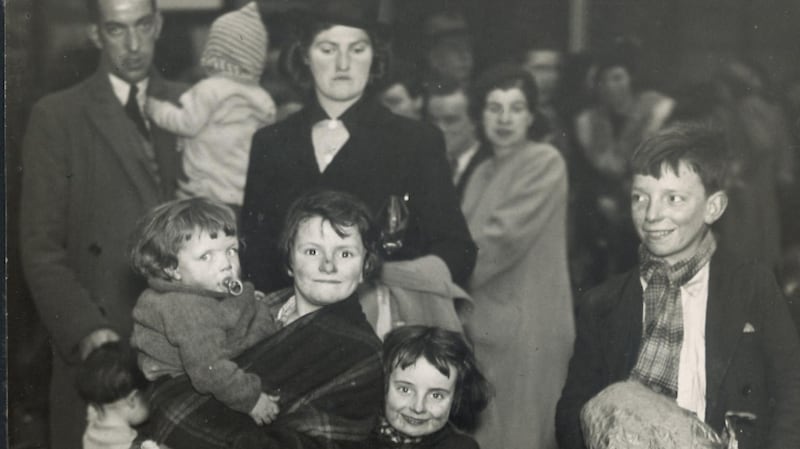
In a city already renowned for inadequate housing provision, the impact of the raid was devastating. Fifty-six thousand houses were destroyed or damaged beyond repair, more than 30 percent of Belfast’s housing stock. Over 100,000 civilians poured out of the city in the days that followed. Those who could not find refuge in northern towns and villages, or in Dublin where de-housed refugees flocked in their thousands, slept in farmhouses, barns or open fields in the countryside. "Ditching" became a common practice among both Protestant and Catholic refugees, and the homeless of both communities saw the other’s plight, ultimately recognising the same familiar impoverishment.
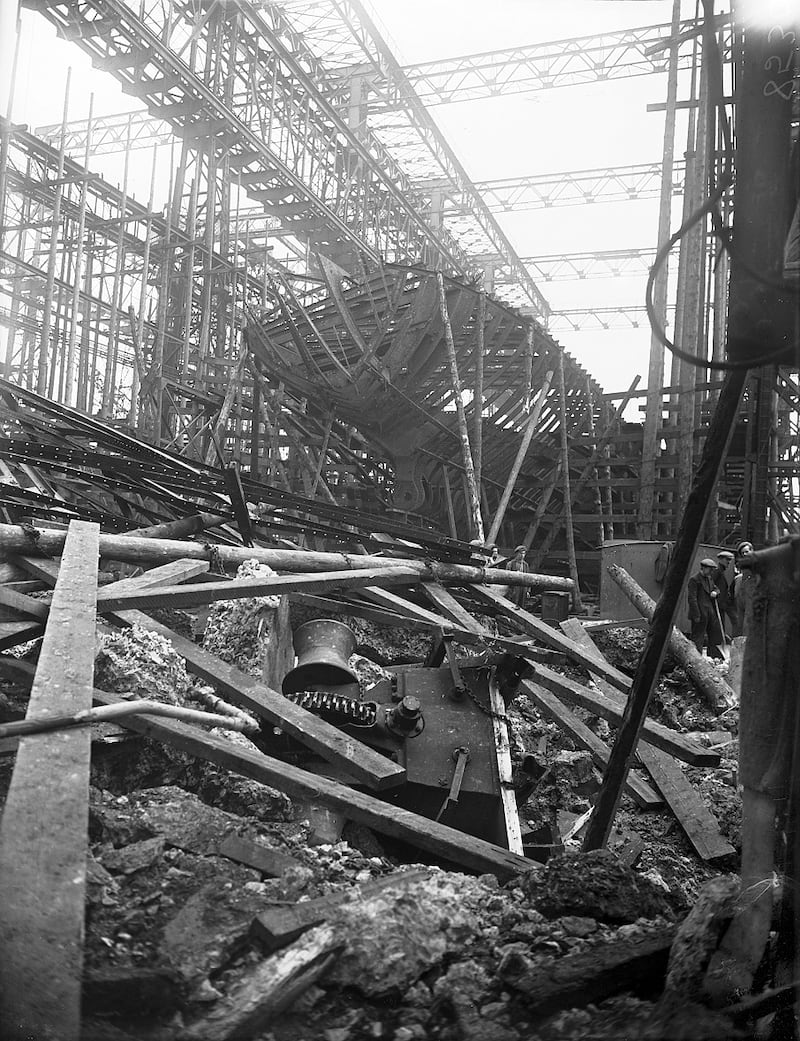
The rage felt equally by the two communities at Stormont’s incompetence and lack of preparedness was famously summarised by Tommy Henderson, Independent Unionist MP for Belfast Shankill in the Northern Ireland House of Commons. Henderson slated every member of government, except MacDermott, and told the minister for home affairs, Richard Dawson Bates, about the solidarity between refugees of both communities sheltering in the countryside: “The Catholics and the Protestants are going up there mixed and they are talking to one another. They are sleeping together in the same sheugh (ditch), below the same tree or in the same barn. They all say the same thing, that the government is no good.”
In the south there was shock and outrage, as well as disbelief at the carnage. De Valera immediately registered a formal protest to Berlin and the department of external affairs soon received a visit from Dr Eduard Hempel, German representative in Dublin, who was terribly distressed by news of the extreme casualties. Four days later, at a public gathering in Castlebar, de Valera stated: “they are our people – we are one and the same people – and their sorrows in the present instance are also our sorrows”.
On April 17th, the editorial in The Irish Times read: “Humanity knows no borders, no politics, no differences of religious belief. Yesterday for once the people of Ireland were united under the shadow of a national blow… Yesterday the hand of good-fellowship was reached across the Border. Men from the South worked with men from the North in the universal cause of the relief of suffering.”
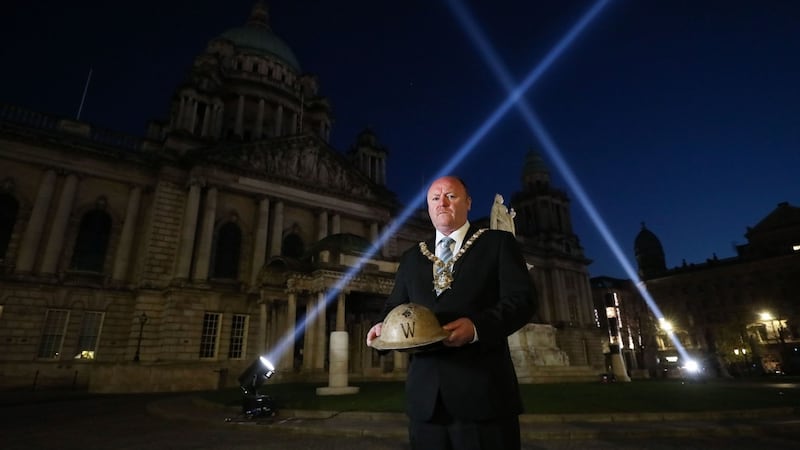
It can now be argued that the most striking impact of the Belfast Blitz was its effect on the people of the south. In the months that followed, the rate of desertion from the Irish Defence Forces skyrocketed: more than 2,700 would desert over the coming year. The number of "Éire" recruits registered by military recruiting authorities in Northern Ireland was over 12,000 during 1941-42. It is not known how many joined the forces in Britain, but the number of exit permits issued to Irish migrants travelling to the UK to work in the war industries dramatically increased. People from the south voted with their feet and chose to serve the Allied war effort.
Although, the Irish State would remain resolutely neutral for the duration of the conflict, Dublin’s previously excellent relations with Berlin were irrevocably tarnished. Ultimately, the Blitz on Belfast, a campaign designed to break the people of the north, turned much of the Irish population firmly against Nazi Germany and, for a brief moment, united the island for the first time since Partition.
Dr Joseph Quinn, who previously lectured in Modern Irish History at UCD, is currently working on the Imperial War Museum’s Second World War & Holocaust Partnership Programme.
National Museums NI are currently developing a walking tour relating to the Belfast Blitz in partnership with Northern Ireland War Memorial, set to be launched in the coming months. The tour, which incorporates photographs and paintings of the aftermath of the Blitz, explores the damage caused to the city centre, and how the face of Belfast was changed as a result of the air raids.













